Reverse Osmosis
Reverse Osmosis Systems
Reverse Osmosis is a technique for the removal of the total dissolved solids in water. The separation process is derived from the naturally occurring phenomenon known as Osmosis.
What is it?
Reverse Osmosis is a technique for up to 99% removal of the total dissolved solids (TDS) in water. The separation process is derived from the naturally occurring phenomenon known as Osmosis. If we have a solution with a low mineral content on one side of a semi-permeable membrane, and on the other side a solution with a high mineral content, the lower mineral content solution will try to migrate across the membrane and dilute down the high mineral content solution by Osmosis.
By providing a counter pressure on to the high mineral content solution the flow is reversed, and water migrates across the membrane minus its high mineral content into the low mineral content solution. This is called Reverse Osmosis. The high mineral content water increases in TDS and eventually must be discharged to waste.
The process can be repeated to give a water very similar in quality to that obtained from traditional Demineralisation plant or mixed bed cartridges.
Why would I need one?
Whenever it is a requirement to remove most of the mineral content of a water supply.
When would I use it?
For compliance with various standards and manufacturers specifications.
Examples include Metal Finishing Industries, Electronic Component Manufacture, Industrial Dishwashing, Glass Processing, Brewing, Spirit Dilution, Steam Boilers, Food Processing, Instrument washing, Car Washes, Chemical Processing, Adiabatic Cooling, Humidification, Combined Heat and Power, Laundries, Automotive (paint, rinsing etc.) and many more applications.
What is the benefit?
On most waters it has the advantage of not requiring dangerous regenerant chemicals and a discharge water that can be reutilised for further low-grade use. Normally the cost per unit of water processed is much lower than traditional methods of production.
˜
Technology improvement have lowered the energy consumption to less that 50% of that required 20 years ago and the amount of good quality water per unit of volume produced has increased.
The reverse osmosis system comprises of the following;-
- Inlet filter housing with 5 micron cartridge elements, pre and post filter pressure gauges.
- A Grundfos low-noise, multi-stage centrifugal type inverter driven high-pressure pump.
- Low energy TFC modules with energy saving PA/PS membranes.
- GRP membrane pressure vessels with line
- Inlet control valve.
- Inlet water pressure-switch to protect the pump in the event of low pressure or no flow.
- Permeate, Concentrate and Reject flow meters.
- Pressure gauges for inlet and concentrate water pressure.
